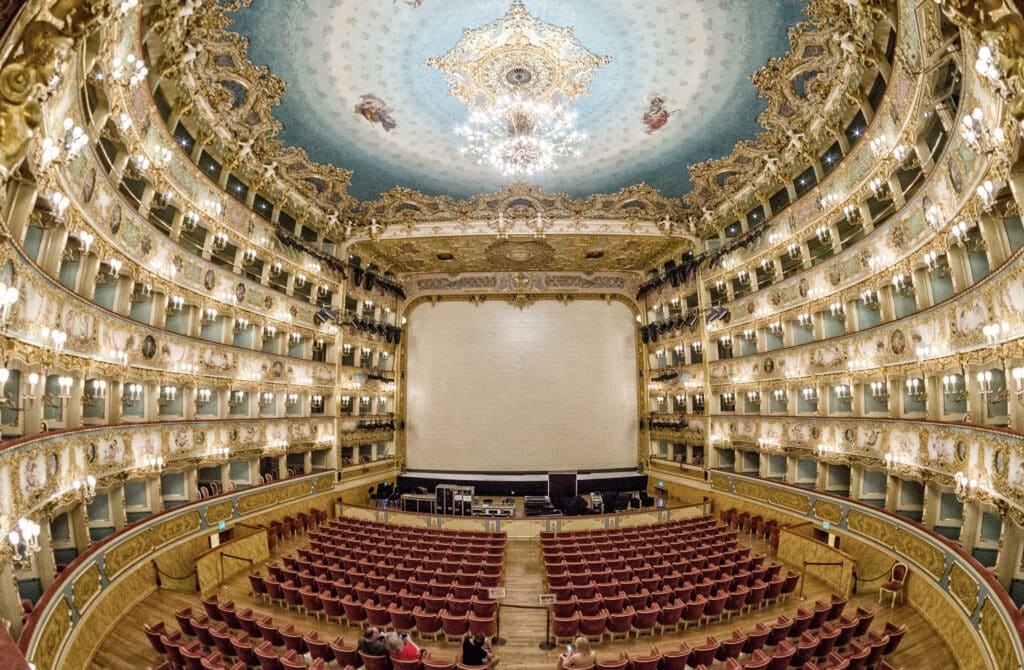
Venice’s famed Teatro La Fenice Opera House welcomes visitors to explore its historic halls for a standard entrance fee of €12 per adult in 2025. Seniors aged 65 and above enjoy a reduced ticket price of €9, while students between 7–26 years old pay just €7 for admission. Children up to 6 years old can enter free of charge.
For families, Family Pass options are available (for example, a family with one child pays around €25, with incremental pricing for each additional child). La Fenice is generally open to visitors daily from 9:30 AM until 6:00 PM, with the last entry permitted at 5:00 PM. Do note that hours can occasionally vary due to rehearsals or special events – on some afternoons the theatre might close as early as 1:30 PM if preparations for an evening performance are underway – so it’s wise to visit earlier in the day. Our team visited La Fenice on 8 July 2025, and all information is current as of that date.
The Phoenix Rises: Inside La Fenice’s Story
Why is this theatre called La Fenice, meaning “The Phoenix”? The name is no accident – this grand opera house has risen from its ashes multiple times. Founded in 1792 during Venice’s golden age, La Fenice quickly became one of Italy’s most important opera venues. In the 19th century it premiered iconic operas by composers like Rossini, Bellini, Donizetti and Verdi – in fact, Verdi’s La Traviata had its debut here in 1853.
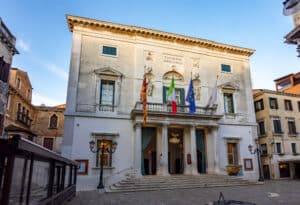
Teatro La Fenice – Italy
The theater’s history took a dramatic turn with devastating fires in 1836 and again in 1996 (the latter due to arson). Each time, however, Venice rebuilt La Fenice to its former glory, preserving the original style and opulence. Its not surprising that Venetians proudly call it “the Phoenix” as it definately embodies resilience and rebirth. Stepping inside today, we were immediately struck by the lavish interior: gilded balconies, an ornate royal box, and ceiling frescoes that exude 19th-century elegance. The atmosphere inside the auditorium is enchanting – one can easily imagine high society of past centuries filling the red velvet seats, awaiting the curtain rise of a new opera by Verdi or Wagner.
What will you see during a daytime visit to La Fenice? Visitors are free to roam through the sumptuous main hall and the adjoining Sale Apollinee (Apollonian Halls), which are beautifully decorated chambers often used for receptions and smaller concerts. An audio guide is included with the admission (available in multiple languages), offering rich commentary about the architecture and the famous performances that have graced the stage. We recommend using the audio guide or the official Teatro La Fenice app – it truly enhanced our understanding of the theater’s storied past as we wandered from the stage to the royal box. A small exhibition space inside is dedicated to the legendary soprano Maria Callas, showcasing photographs and costumes from her Venetian years. During our visit, we lingered in the exhibit and learned fascinating anecdotes about Callas’s performances here in the 1950s. The blend of history and ambiance makes the visit special: one moment you’re gazing at the stage where titans of opera stood; the next, you’re standing in the very halls that survived fires and heard centuries of applause.
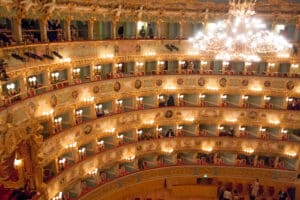
Interior of La Fenice Theatre, Venice, Italy
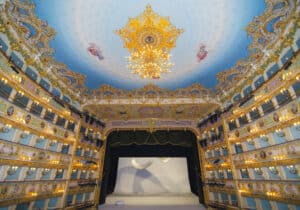
Interior of La Fenice
The theater staff were friendly, and photography without flash was allowed in most areas, which we appreciated. The entire self-guided tour took us about an hour, and we’d recomend taking your time to soak in the details – from the intricate stucco work to the grand chandelier overhead. In our experience, La Fenice offers a vivid glimpse into Venice’s cultural soul, and we felt transported back in time amid the baroque decor and echoes of music.
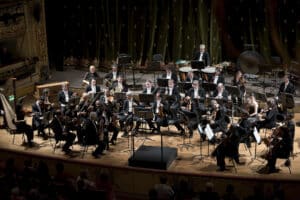
Sala concerti
Beyond the Stage: Nearby Sights and Restaurants
After touring La Fenice, what else can you explore nearby? Fortunately, this neighborhood in the San Marco district is packed with noteworthy sights. Just a five-minute walk away is the bustling St. Mark’s Square (Piazza San Marco in Italian), where you can visit landmarks like St. Mark’s Basilica and the Doge’s Palace. We highly recommend strolling over to the square after your theater visit – it’s an easy walk and you’ll pass charming boutique-lined streets along the way. Another hidden gem very close to La Fenice is the Scala Contarini del Bovolo, a beautiful spiral staircase tucked in a courtyard, which offers a panoramic rooftop view of Venice’s skyline. If you have more time, the famous Rialto Bridge is about 10 minutes away on foot, leading to lively markets and shops on the other side of the Grand Canal. We noticed that the area around La Fenice is pleasantly less crowded than the main tourist paths, so wandering these side lanes gave us a peaceful break before heading back into the bustle.
Visiting an opera house can certainly work up an appetite, and luckily there are excellent dining options right around La Fenice. For a refined meal in a historic setting, we recommend Ristorante Antico Martini, which sits just next to the theater in the same piazza. This elegant restaurant has been serving Venetian cuisine since the 18th century – we dined there after an evening performance and loved the classic atmosphere (jackets are not required, but you might feel inclined to dress up a bit). If you’re looking for something more casual, Taverna La Fenice is adjacent to the theater and offers traditional Italian dishes in an intimate setting; it’s perfect for a pre-show dinner or a relaxing lunch after your tour. Of course, being so close to St. Mark’s Square means you can also cap off your day with a coffee at the legendary Caffè Florian or enjoy gelato while sitting by the canals.
We’ve found that even a short break at a café in this area – perhaps a creamy espresso or the local specialty spritz – is a delightful way to savor the Venetian atmosphere after exploring the theater. Before you leave, you might also browse the La Fenice bookshop on site for opera souvenirs or recordings of famous performances. Visiting Venice’s La Fenice is not just about a single building; it’s an immersive dive into history, music, and the daily life of Venice. We recommend taking the time to enjoy both the opera house and its surroundings – the memories will surely stay with you long after you’ve left the floating city.

